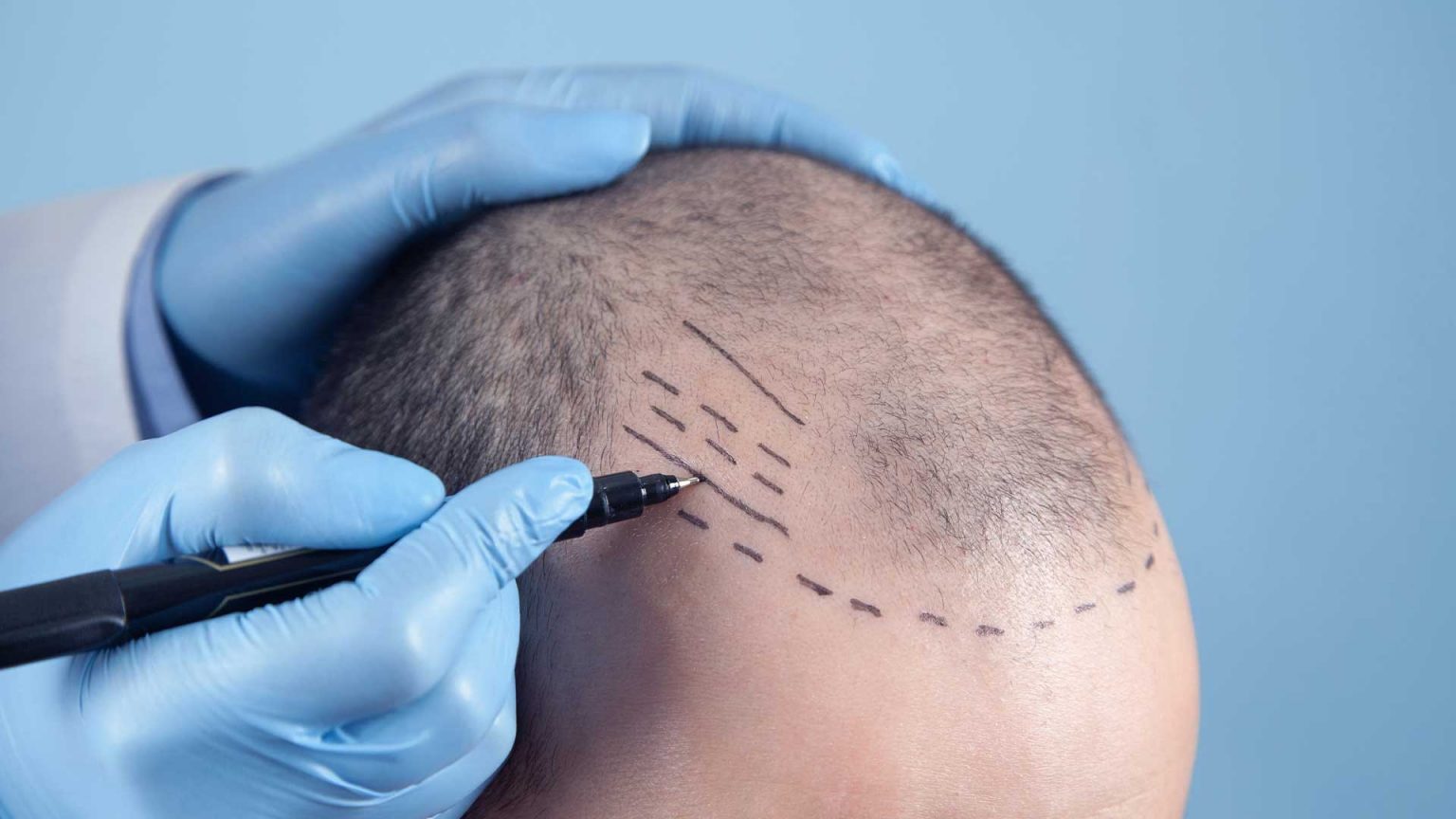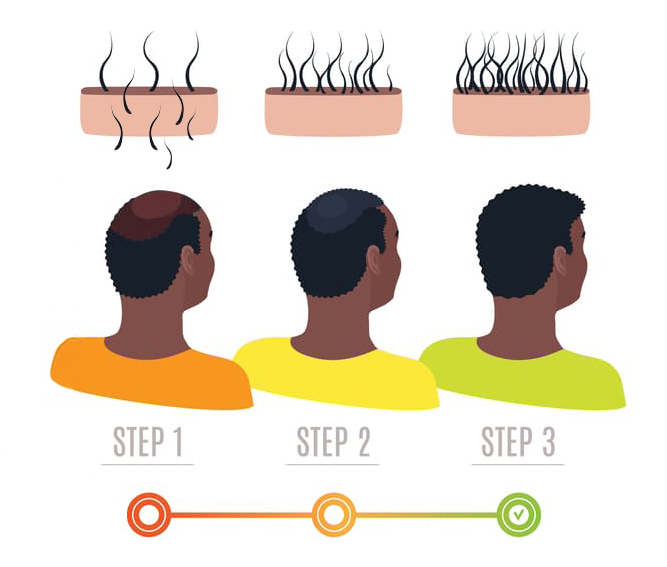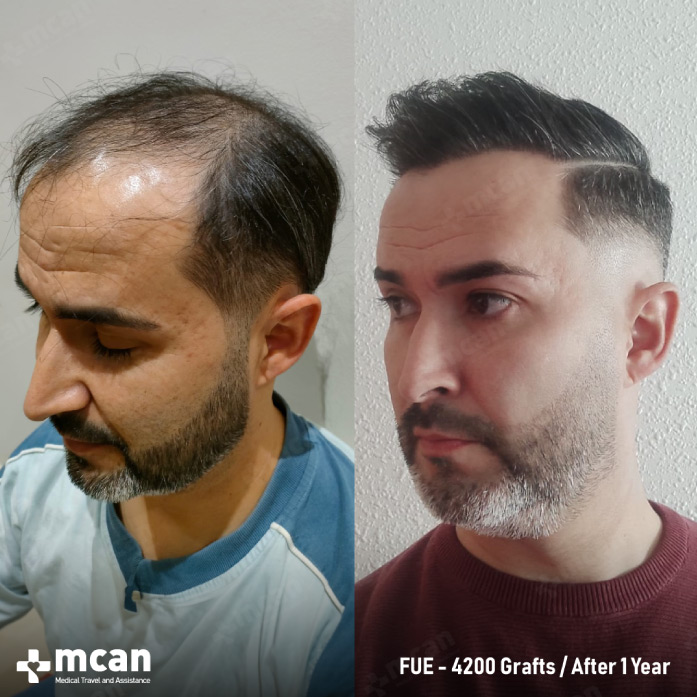
Hair transplant surgery has become a trusted, long-term solution for those facing hair loss, providing natural-looking results that stand the test of time. This transformative procedure not only restores hair but also brings renewed confidence and freedom from temporary treatments for hair loss. While designed to be permanent, the lasting effects of a hair transplant can vary based on factors like the techniques used, individual hair characteristics, and proper aftercare.
Understanding the journey from initial hair growth stages to long-term maintenance is essential for achieving optimal results. By transplanting hair follicles from areas of the scalp that are immune to hair loss, hair transplants provide coverage that grows naturally over time.
This article will explain what you can expect from a hair transplant, the factors that influence its longevity, and the steps you can take to protect your investment in lasting hair restoration.
Understanding Hair Transplant Permanence
The permanence of a hair transplant largely depends on the type of hair used. During the procedure, hair follicles are transplanted from the “donor area,” typically the back or sides of the head where hair is genetically immune, to areas experiencing hair loss.
The hair in the donor area is resistant to balding, making hair transplants an effective and lasting solution for hair restoration. Transplanted hair usually lasts a lifetime because it doesn’t face the same hair-loss triggers as the original thinning hair. While transplanted hair is highly resistant to balding, it’s still essential to manage overall scalp health to maximize its longevity.
Factors like scalp hygiene, proper hydration, and protection from excessive sun exposure contribute to maintaining a healthy environment for the transplanted hair. Regular check-ups with a specialist can also help monitor any changes in the surrounding, non-transplanted hair. This allows timely interventions, if needed, to preserve an even and natural look over time.
Hair Growth Timeline After a Transplant
After a hair transplant, new hair progresses through distinct growth stages on its way to full density. Here’s a general timeline of what you can expect after the procedure:

| Timeline | Description |
|---|---|
| Weeks 1-3 | The newly transplanted hair may shed in a process known as “shock loss,” which is entirely normal. This shedding makes room for new growth from the transplanted follicles. |
| Months 3-4 | Small, fine hairs start emerging from the scalp, although they may not be fully noticeable. |
| Months 6-9 | Transplanted hair starts growing more densely, and patients can see a significant improvement in hair volume. |
| Months 12-18 | The final results are typically visible by this stage, with hair achieving its fullest density and natural look. |
The timeline can vary from person to person, but most patients achieve satisfying results within a year.
Case Study: Juan’s Hair Transplant with MCAN Health

Juan, a 35-year-old from Spain, underwent an FUE hair transplant with 4,200 grafts to restore density in his frontal hairline and crown. Thanks to precise graft placement and a comprehensive aftercare plan, Juan’s results at the 12-month mark showed perfect success, with full, natural-looking coverage and restored hair volume.
You can check Juan’s Hair Transplant Case Study for detailed information about his treatment. For more information on the recovery process, you can check out our blog about hair transplant recovery in 18 months.
Factors That Influence the Longevity of a Hair Transplant
Several factors can impact how long the results of a hair transplant will last:
- Hair Type and Texture: Individuals with thicker, coarser hair tend to see longer-lasting results since these types of hair provide better scalp coverage.
- Age: Younger patients may experience further hair loss after the transplant in areas not covered by the procedure, which could require additional treatments later.
- Lifestyle and Health: Diet, stress management, and smoking can all impact hair health. A healthy lifestyle helps sustain both natural and transplanted hair.
- Technique Used: Advanced techniques such as FUE (Follicular Unit Extraction) and DHI (Direct Hair Implantation) offer higher precision, resulting in natural, durable results. Choosing the right technique with an experienced clinic like MCAN Health can ensure optimal and long-lasting outcomes.
How Long Can You Expect the Hair Transplant Results to Last?
Usually, a well-executed hair transplant will last a lifetime, thanks to the immunity of the transplanted hair follicles. However, it’s essential to note that while the transplanted hair is permanent, the natural, non-transplanted hair around it can still be susceptible to the natural aging process and genetic balding patterns. In some cases, people choose a follow-up transplant to treat new thinning areas.
For most people, the results of a hair transplant last a long time and keep their appearance improved even years later. Regular check-ins with your provider can help maintain these results, as they can see if any extra treatments might help keep or improve your initial hair transplant.
Does a Hair Transplant Last Forever?
Technically, the hair follicles moved during the transplant should continue to grow permanently. However, “forever” in hair transplantation can still be affected by the natural aging process, which may still cause changes in hair thickness and density over time.
While the transplanted hair is resilient, the results can be influenced by lifestyle choices. Factors like stress management, proper nutrition, and avoiding smoking all play a role in maintaining hair health over time. For those committed to a long-term approach, these small daily habits can support the longevity of the transplant, complementing the procedure’s effects and ensuring a fuller, healthier look as the years go by.
What to Expect Long-Term: Year-by-Year Breakdown
Hair transplant results are designed to last. However, it’s helpful to understand how hair density and appearance may evolve over the years. Here’s a general timeline for what to expect long-term:
| Timeline | Description |
|---|---|
| First Year | Patients achieve noticeable results, with full density by the 12th to 18th month post-surgery. |
| 1-5 Years | Results typically remain consistent. Any thinning that occurs is usually in non-transplanted hair. |
| 5-10 Years | A slight reduction in hair density may be noticed as natural aging occurs, but transplanted hair remains intact. |
| 10+ years | Most people continue to enjoy significant hair coverage from the initial transplant, although some may experience minor density changes or choose a touch-up. |
Can a Hair Transplant Fail Over Time?
While hair transplants have a high success rate, certain conditions can affect their longevity:
- Improper Aftercare: Failure to follow post-surgery guidelines can result in complications that affect hair growth. Proper aftercare and following your surgeon’s instructions are vital for successful results.
- Underlying Health Conditions: Hormonal imbalances or autoimmune conditions can influence hair growth and may lead to thinning or hair loss over time.
- Choosing the Wrong Clinic: One of the most important requirements of a successful hair transplant is finding the right clinic for you. Opting for an unqualified or inexperienced clinic can lead to poor grafting techniques, resulting in unsatisfactory outcomes. Working with trusted providers like MCAN Health ensures a high success rate due to their certified expertise and patient-centered care.
Maintaining Your Hair Transplant Results
To make the most of your hair transplant, adopt a maintenance routine that promotes healthy hair. This includes using hair-strengthening products, a balanced diet rich in vitamins and minerals, regular scalp massages to stimulate blood flow, and avoiding harsh chemical treatments or excessive heat.
Clinics like MCAN Health offer ongoing support to patients, including guidance on post-surgery care and follow-up treatments to help you maintain a healthy, full head of hair for years to come.
The Importance of Aftercare in Hair Transplant Longevity
Aftercare is crucial to the success of a hair transplant. Immediately following the procedure, patients should avoid physical activities that could disrupt the grafts, such as strenuous exercise, saunas, or sun exposure. Keeping the scalp clean and moisturized, avoiding scratching, and following all recommended care instructions helps prevent infection and support healing.
MCAN Health emphasizes comprehensive hair transplant aftercare support for its patients. This includes post-surgery follow-ups, personalized advice for maintaining hair health, and assistance with any questions you may have during the healing period. Our patient-centered approach ensures you receive guidance and care at every step, from the initial consultation to years after your procedure.
Hair Transplant in Turkey with MCAN Health
Choosing MCAN Health for your hair transplant in Turkey means receiving top-quality care with proven success at an affordable price. Our skilled surgeons use the latest techniques to deliver natural, lasting results tailored just for you. With a high success rate and thousands of satisfied patients, we prioritize your comfort and safety from the moment you arrive. We handle everything from travel and accommodations to 12 months of aftercare, including support in the UK, ensuring you feel confident and fully supported every step of the way.




